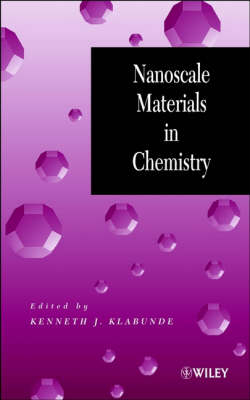
Nanoscale Materials in Chemistry
Seiten
2001
John Wiley & Sons Inc (Verlag)
978-0-471-38395-6 (ISBN)
John Wiley & Sons Inc (Verlag)
978-0-471-38395-6 (ISBN)
- Titel erscheint in neuer Auflage
- Artikel merken
Zu diesem Artikel existiert eine Nachauflage
Exploring the vast potential of nanomaterials, this book serves as useful reading for the entire science community.It presents a thorough introduction to the field of nanostructured materials, including chemical synthesis methods, bonding theories, and applications. It is suitable as a primary text for graduate courses and also for scientists.
In recent years, interest in the preparation and characterization of nanostructured materials has grown due to their distinctive properties and potential technological applications. Nanoscale materials represent a new realm of matter and offer widespread possibilities for contributions to science and technology. "Nanoscale Materials in Chemistry" explores the vast potential of nanomaterials and serves as essential reading for the entire science community. The extensive coverage of "Nanoscale Materials in Chemistry" presents a thorough introduction to the field of nanostructured materials, including chemical synthesis methods, bonding theories, and applications. Because nanomaterials are finding more applications in the real world, this text contains up-to-date treatment of such topics as: Metals, semiconductor nanocrystals, and ceramics; Double layers, optical properties, and the electrochemistry of metal nanoparticles; Chemical and catalytic aspects of nanocrystals; and Specific heats and melting points of nanocrystalline materials.
Authored by world-renowned experts in the field of nanotechnology, "Nanoscale Materials in Chemistry" is suitable as a primary text for graduate courses and is a reliable resource for scientists.
In recent years, interest in the preparation and characterization of nanostructured materials has grown due to their distinctive properties and potential technological applications. Nanoscale materials represent a new realm of matter and offer widespread possibilities for contributions to science and technology. "Nanoscale Materials in Chemistry" explores the vast potential of nanomaterials and serves as essential reading for the entire science community. The extensive coverage of "Nanoscale Materials in Chemistry" presents a thorough introduction to the field of nanostructured materials, including chemical synthesis methods, bonding theories, and applications. Because nanomaterials are finding more applications in the real world, this text contains up-to-date treatment of such topics as: Metals, semiconductor nanocrystals, and ceramics; Double layers, optical properties, and the electrochemistry of metal nanoparticles; Chemical and catalytic aspects of nanocrystals; and Specific heats and melting points of nanocrystalline materials.
Authored by world-renowned experts in the field of nanotechnology, "Nanoscale Materials in Chemistry" is suitable as a primary text for graduate courses and is a reliable resource for scientists.
KENNETH J. KLABUNDE, is Professor of Chemistry at Kansas State University in Manhattan, Kansas.
Preface. Contributors. Introduction to the Nanoworld (K. Klabunde). Metals (G. Schmid). Semiconductor Nanocrystals (M. Pileni). Ceramics (A. Khaleel & R. Richards). Metal Nanoparticles: Double Layers, Optical Properties, and Electrochemistry (P. Mulvaney). Magnetism (C. Sorensen). Chemical and Catalytic Aspects of Nanocrystals (K. Klabunde & R. Mulukutla). Specific Heats and Melting Points of Nanocrystalline Materials (O. Koper & S. Winecki). Applications of Nanocrystals (J. Parker). Index.
| Erscheint lt. Verlag | 14.9.2001 |
|---|---|
| Zusatzinfo | index |
| Verlagsort | New York |
| Sprache | englisch |
| Maße | 161 x 245 mm |
| Gewicht | 539 g |
| Einbandart | gebunden |
| Themenwelt | Naturwissenschaften ► Chemie ► Anorganische Chemie |
| Technik ► Maschinenbau | |
| ISBN-10 | 0-471-38395-3 / 0471383953 |
| ISBN-13 | 978-0-471-38395-6 / 9780471383956 |
| Zustand | Neuware |
| Haben Sie eine Frage zum Produkt? |
Mehr entdecken
aus dem Bereich
aus dem Bereich



